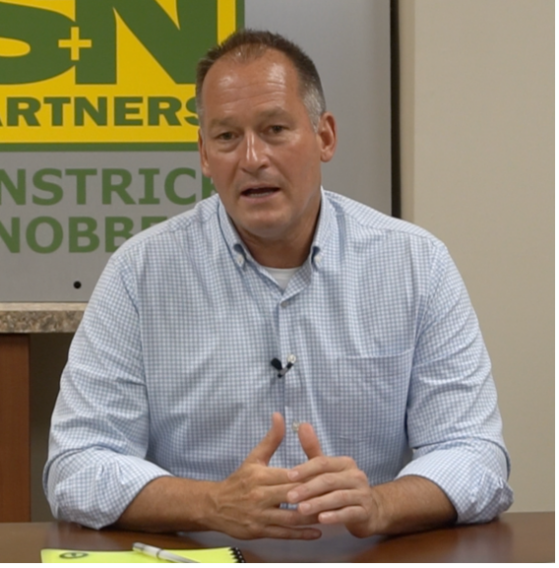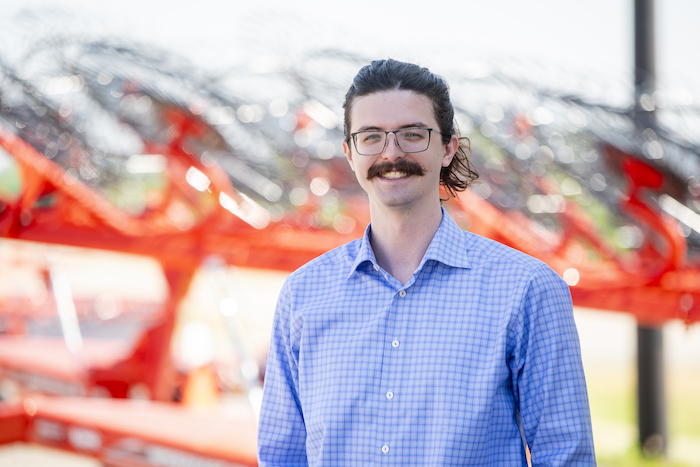Everyone is looking for more technicians. Almost 85% of dealers in the most recent Farm Equipment Dealer Business Outlook & Trends survey said they want to add technicians in 2023.
Sydenstricker Nobbe Partners, a 27-store Missouri and Illinois John Deere dealer — Farm Equipment’s 2021 Dealership of the Year — decided if they couldn’t find the techs they need, they’d create them. In September 2022, they launched the SNP Career Academy in Wentzville, Mo., focused on the technical training of service technicians for John Deere Ag & Turf equipment.
Ted Briscoe, SN Partners CEO shares the curriculum of their new SNP Career Academy and the return on investment the dealership expects from their first group of students.
Can you give an overview on the academy and its curriculum?
About a year ago, we got tired of feeling sorry for ourselves in our struggles with the lack of qualified technicians in our area. We worked through an analysis and decided to start our own technician training program. And it’s more than training: this is a tech college. This is not to replace but to augment the work we’re doing with the John Deere tech training program as well as the state of Missouri. We bought a facility with about 10,000 square feet for our hands-on training space and about 5,000 feet for the classroom.
We’ve created a shorter curriculum to get people to work in our shops as quickly as possible. Instead of the Deere program where you rotate back and forth, we have 10 months of continuous training. And when they graduate, they will come out certified either for a large ag track or a small ag track.
Dealer Takeaways
- For dealers of scale, starting your own academy may be the future of tech recruitment.
- Larger upfront investments will be a growing necessity to keep your talent pipeline flowing.
- Listen to your technician candidates: never assume today’s solution will work tomorrow.
As these students start, the first 3 months will be standard curriculum. That’s SNP Service 101, where we’re teaching our business processes, John Deere Service Advisor, the standard business tools they use to conduct their business. That’s followed by a module on engines and transmissions, and then a module on components.
Then we move into month long product specific blocks. Upon completion of the program, these students will have gone through the core curriculum and then 4-5 product-specific blocks.
This is all in a centralized facility in the geographic center of our footprint right outside St. Louis, where we provide housing for the students. When they come to work, we’re paying them as full-time employees. I’d say 80-90% of them know exactly where they’ll be upon graduation.
How many students do you have in your first class?
Our original thought was to have 15 students the first year, 20 the second year and 25 in the third. With the space we have, 25 is the maximum number we’d ever want to have at any given time.
In our first year, we ended up with 26 students. The interesting thing is this system will perpetuate itself. They’re all from local communities, and they’re local success stories, so the program is feeding on itself. We already have more applicants for next fall’s class than we have spots available.
We’ll be a different position for the second year and going to be selecting students, working through some interviews and picking the best available as opposed to year one.
How did you find your first applicants? Where did you advertise the academy?
We’ve always had an active presence in our local communities, either through the high school, 4-H programs or college fairs. This was all about putting an offering out and continuing conversations we were already having.
What we found is that for a lot of students, it’s more attractive to have a job right away and be able to go to work in 10 months as opposed to 2 years. Some people just need to do that. They need to be making money sooner.
For our student signing days, we’re taking fun pictures of people with their families back at their high school, like they’ve signed up to be a linebacker at the University of Alabama. These guys and their families are proud. It’s a fun way for us to celebrate success in their local communities.
What are your expectations for your return on investment?
We have a return on investment model, and we have to keep ourselves honest about the economics. At 25 students, it costs us $65,000 per student to get them through the program. That’s with everything being fully allocated from the utilities to the instructors, to the tools we provide. Every student gets a $10,000 set of tools that’s theirs after 2 years.
A combination of saving the tuition reimbursement expense if we were sending them to a John Deere school, internal training that we will save on and improving their productivity in their first 2 years in the shop is where we will see the return.
We have assumptions primarily tied to how much more productive they can be when they get into the shop after we teach them our way. This is the big unproven factor. The big bet we’re making is we believe that coming to our program, teaching them our processes, teaching them the SNP way will not only help us with retention of technicians but also improve their productivity for the first couple years. If we’re even close to our assumptions financially, this will be very attractive for us [financially] in addition to securing our technicians.
For dealers who might be considering starting their own training program, where do you recommend they start?
If our financial assumptions are correct, it’s a no-brainer for dealers of scale that can afford to make this investment. We already have had several dealers approach us who are already willing to take the risk.
Some version of this will be around for a long time. Whether or not we have this nailed perfectly has yet to be seen — probably not, but we’ll change it. We know there’s a lot more right about it than wrong. We all have to keep looking outside of the traditional tools that we have.
We believe the more we can do and learn and listen to these students, the more effective we are going to be. We’re learning a lot by listening to what these students want and need instead of assuming what worked yesterday is the right answer for tomorrow.







